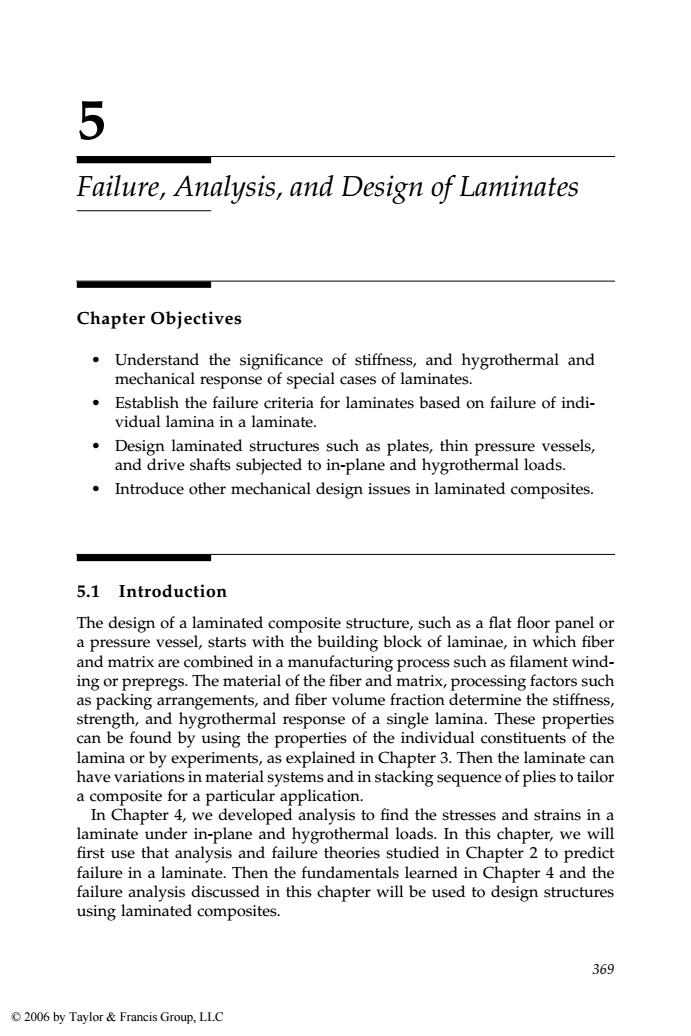正在加载图片...

5 Failure,Analysis,and Design of Laminates Chapter Objectives Understand the significance of stiffness,and hygrothermal and mechanical response of special cases of laminates. Establish the failure criteria for laminates based on failure of indi- vidual lamina in a laminate. Design laminated structures such as plates,thin pressure vessels, and drive shafts subjected to in-plane and hygrothermal loads. Introduce other mechanical design issues in laminated composites. 5.1 Introduction The design of a laminated composite structure,such as a flat floor panel or a pressure vessel,starts with the building block of laminae,in which fiber and matrix are combined in a manufacturing process such as filament wind- ing or prepregs.The material of the fiber and matrix,processing factors such as packing arrangements,and fiber volume fraction determine the stiffness, strength,and hygrothermal response of a single lamina.These properties can be found by using the properties of the individual constituents of the lamina or by experiments,as explained in Chapter 3.Then the laminate can have variations in material systems and in stacking sequence of plies to tailor a composite for a particular application. In Chapter 4,we developed analysis to find the stresses and strains in a laminate under in-plane and hygrothermal loads.In this chapter,we will first use that analysis and failure theories studied in Chapter 2 to predict failure in a laminate.Then the fundamentals learned in Chapter 4 and the failure analysis discussed in this chapter will be used to design structures using laminated composites. 369 2006 by Taylor Francis Group,LLC369 5 Failure, Analysis, and Design of Laminates Chapter Objectives • Understand the significance of stiffness, and hygrothermal and mechanical response of special cases of laminates. • Establish the failure criteria for laminates based on failure of individual lamina in a laminate. • Design laminated structures such as plates, thin pressure vessels, and drive shafts subjected to in-plane and hygrothermal loads. • Introduce other mechanical design issues in laminated composites. 5.1 Introduction The design of a laminated composite structure, such as a flat floor panel or a pressure vessel, starts with the building block of laminae, in which fiber and matrix are combined in a manufacturing process such as filament winding or prepregs. The material of the fiber and matrix, processing factors such as packing arrangements, and fiber volume fraction determine the stiffness, strength, and hygrothermal response of a single lamina. These properties can be found by using the properties of the individual constituents of the lamina or by experiments, as explained in Chapter 3. Then the laminate can have variations in material systems and in stacking sequence of plies to tailor a composite for a particular application. In Chapter 4, we developed analysis to find the stresses and strains in a laminate under in-plane and hygrothermal loads. In this chapter, we will first use that analysis and failure theories studied in Chapter 2 to predict failure in a laminate. Then the fundamentals learned in Chapter 4 and the failure analysis discussed in this chapter will be used to design structures using laminated composites. 1343_book.fm Page 369 Tuesday, September 27, 2005 11:53 AM © 2006 by Taylor & Francis Group, LLC